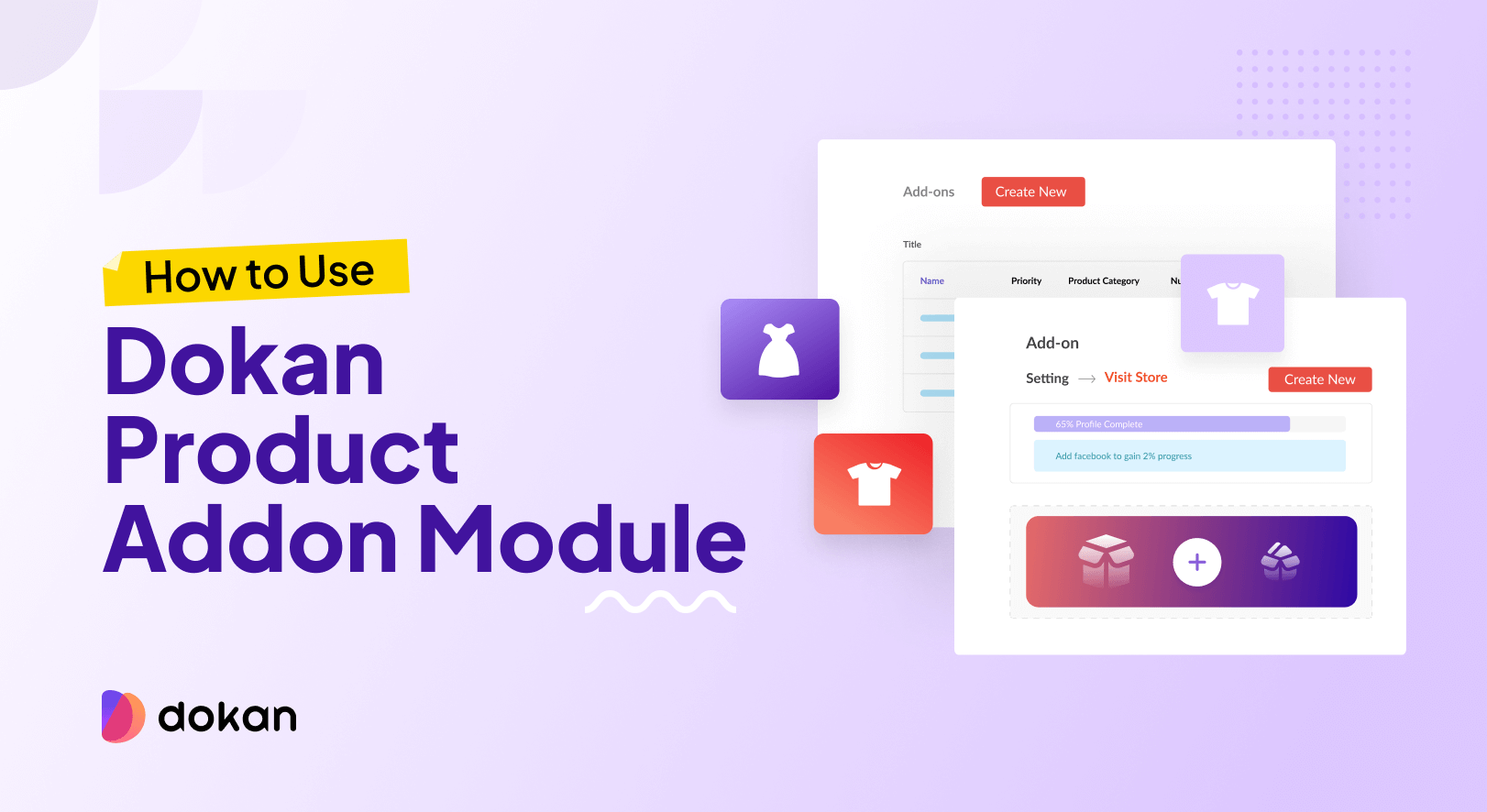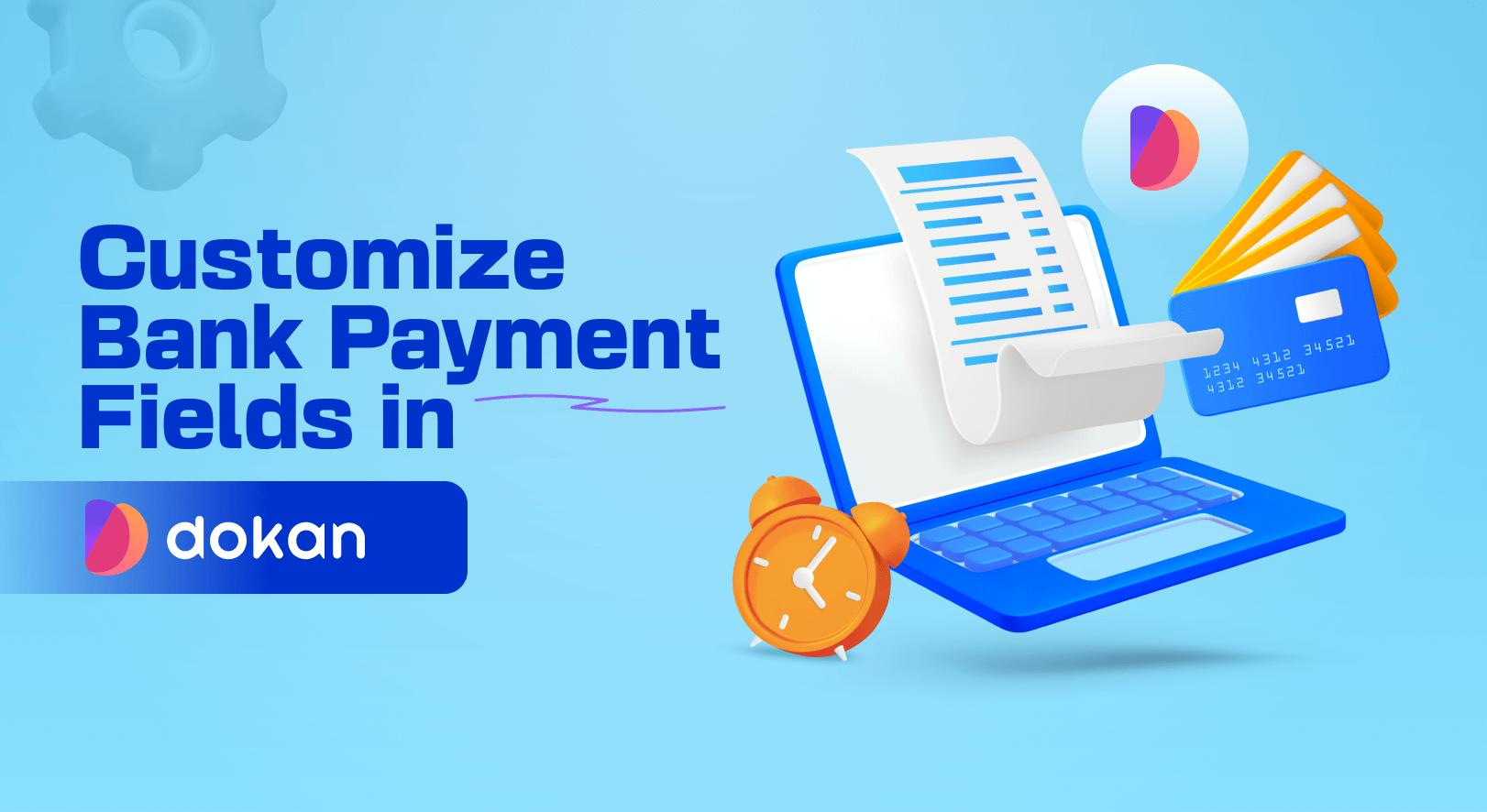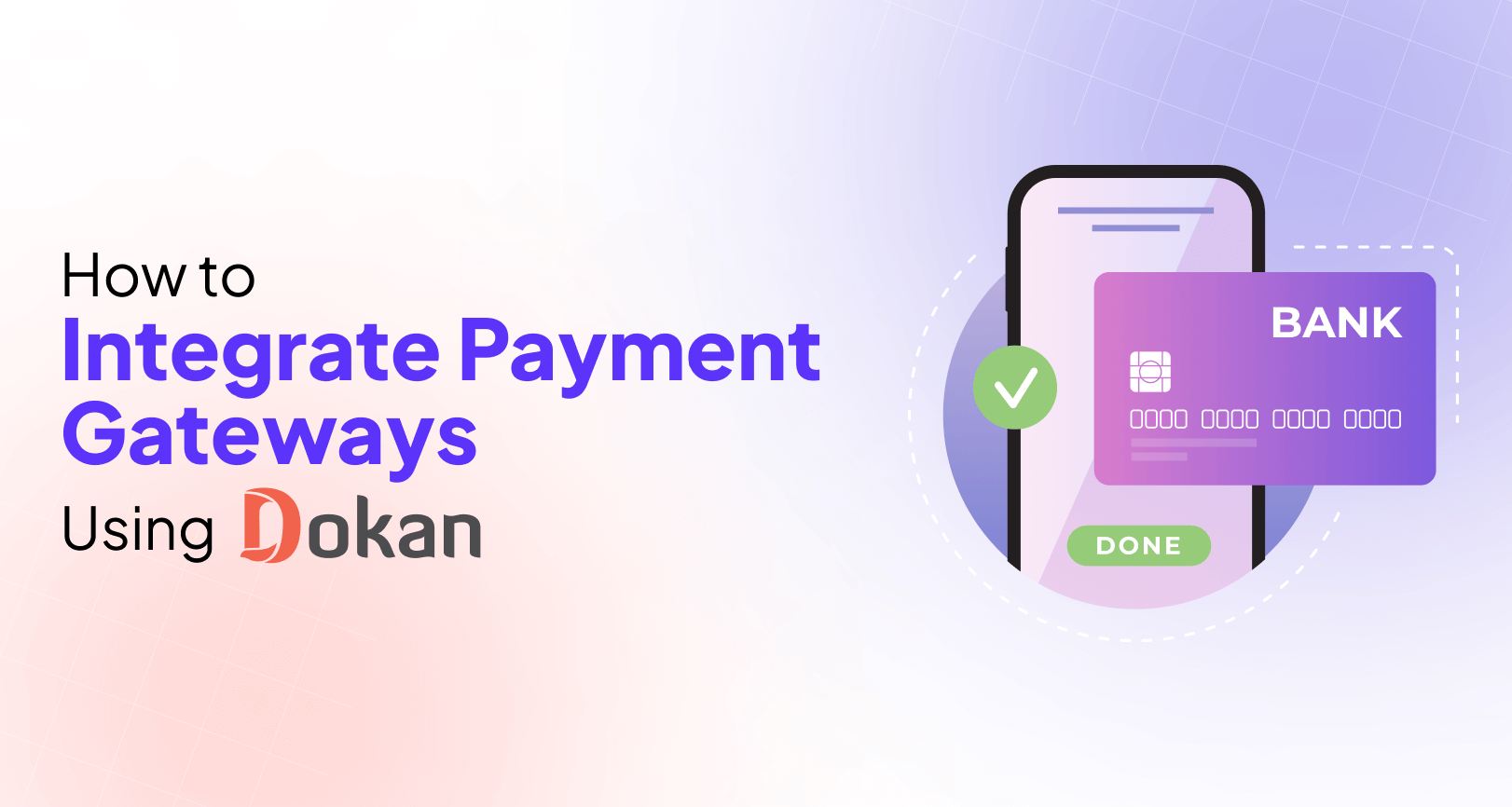Dokan multivendor marketplace plugin is one of the most popular marketplace plugins in the WordPress industry. The plugin has an amazing list of modules and features that help admins run their marketplace with ease.
One of them is the Dokan Product Addon module. This module will help you sell more products and increase your sales. How?
In this write-up, we are going to talk about how to use Product Addon module of Dokan to your advantage.
Let’s start with-
Why A Product Addon is Important for a Marketplace
Suppose you have an electronic products marketplace and sell products like refrigerators, TVs, microwave ovens, etc. People might need an extra set of wires after buying a fridge or an extra remote control system for their TV. You can use the Product Addon module to sell those.
The customers will have the option of whether to buy those extra products or not.
The concept of Product Addon was first introduced by WooCommerce in the WordPress ecosystem. But that is only for a single vendor online store. With Dokan Product Addon, this feature is available for WordPress multi-vendor marketplace owners and users.
Product Addon also helps with cross-selling as well. Don’t worry, we will talk about cross-selling in detail in the later part of the article.
You want to find out how Dokan product addon works. Let’s go.
How Dokan Product Addon Module Works
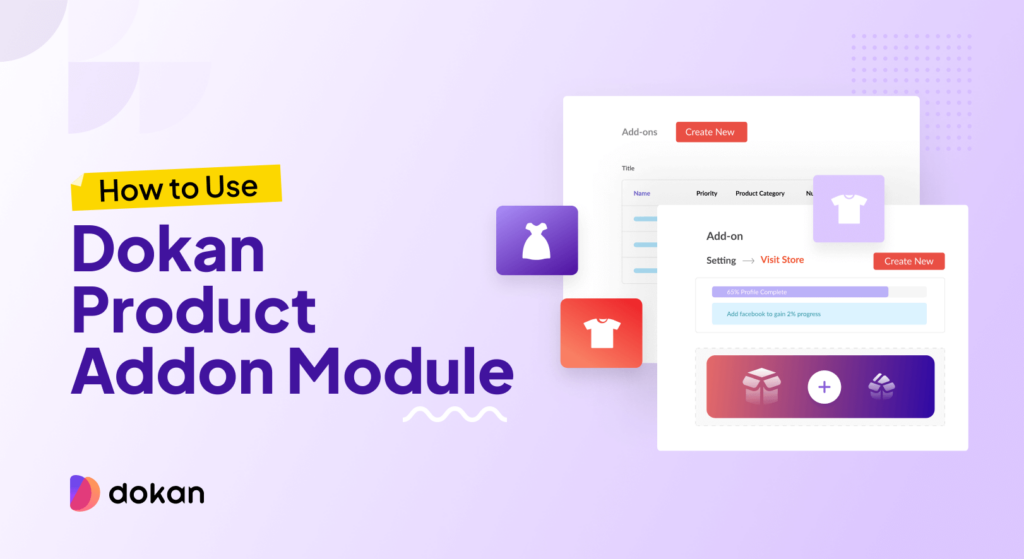
The use case of having a product addon is very interesting and maybe pique your interest. So, let us show you how the Product Addon module works.
Here are the prerequisites of using the Product Addon module-
- WooCommerce
- WooCommerce Product Addon (Pro)
- Dokan Lite
- Dokan Pro
After activating all the above plugins, create a marketplace with vendors and products. We have various guides on creating different types of marketplaces-
If you have created your marketplace, then lets move to the next part-
Go to Wp Admin Dashboard→Dokan→Modules to activate the Product Addon module. Don’t forget to activate the WooCoomerce Product Addon extension plugin first.
You will find it under the plugins option from your dashboard.
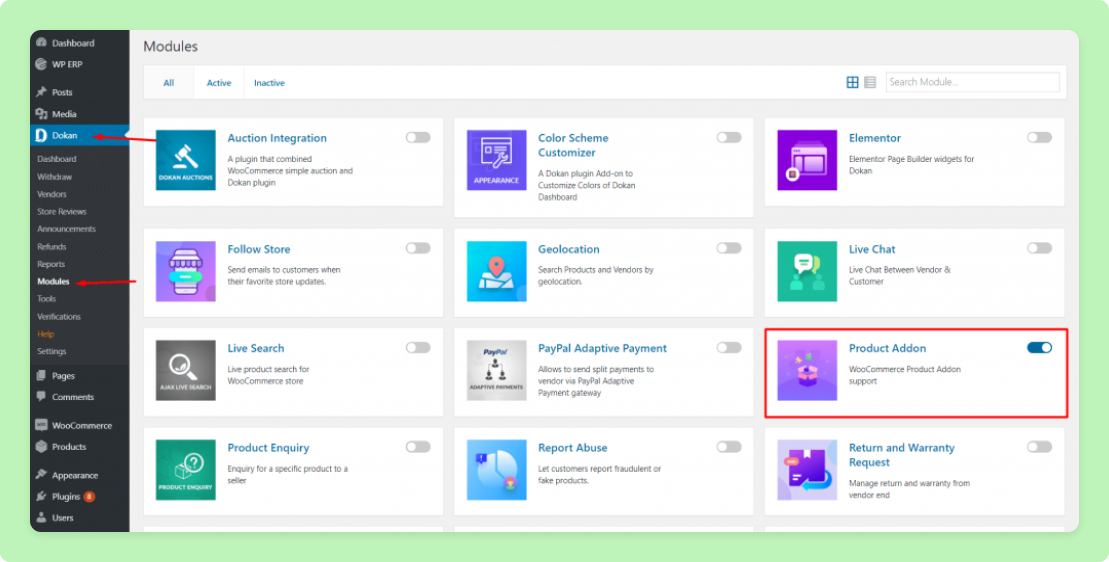
Both the admin and vendor can create add-ons from the admin dashboard and vendor dashboard.
How to Use Dokan Product Addon as Admin
If an admin has their store, they can create add-ons for their products.
To create an addon navigate to WP Admin Dashboard→ Products→ Addon. Click on the button Create New on top of the screen.
You will notice some fields are opening below the page. You need to add a name for your reference, and a priority number so that if you have multiple add-ons then the addon will be displayed according to those numbers.
Also, you need to mention the product category this addon will apply to. For example, if you choose All Products, that means the addon will apply to all of your products.
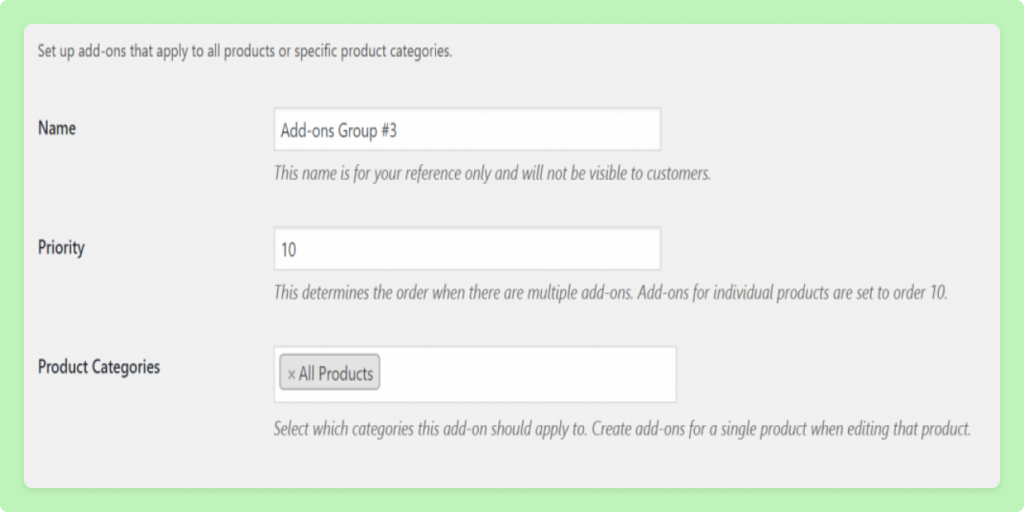
To set the addon, click on the Add Field button located at the bottom. You will have multiple options to set up your addon.
Like the type, display, title, and many more. You will have the option to set the addons for a flat fee, quantity-based or percentage-based.

Click on the Publish button to finish.
You have created your addon.
How it Looks for from the Customer End
It is simple when they go to buy a product they will have the options for the addons. When they select an addon, they will be charged according to the charge you have set for that addon.
For example, the addon Service1 will be charged with a flat fee of $20. So, when the customer books a room worth $179 and adds Service1 as the addon. They will have to pay ($179+$20)=$199.
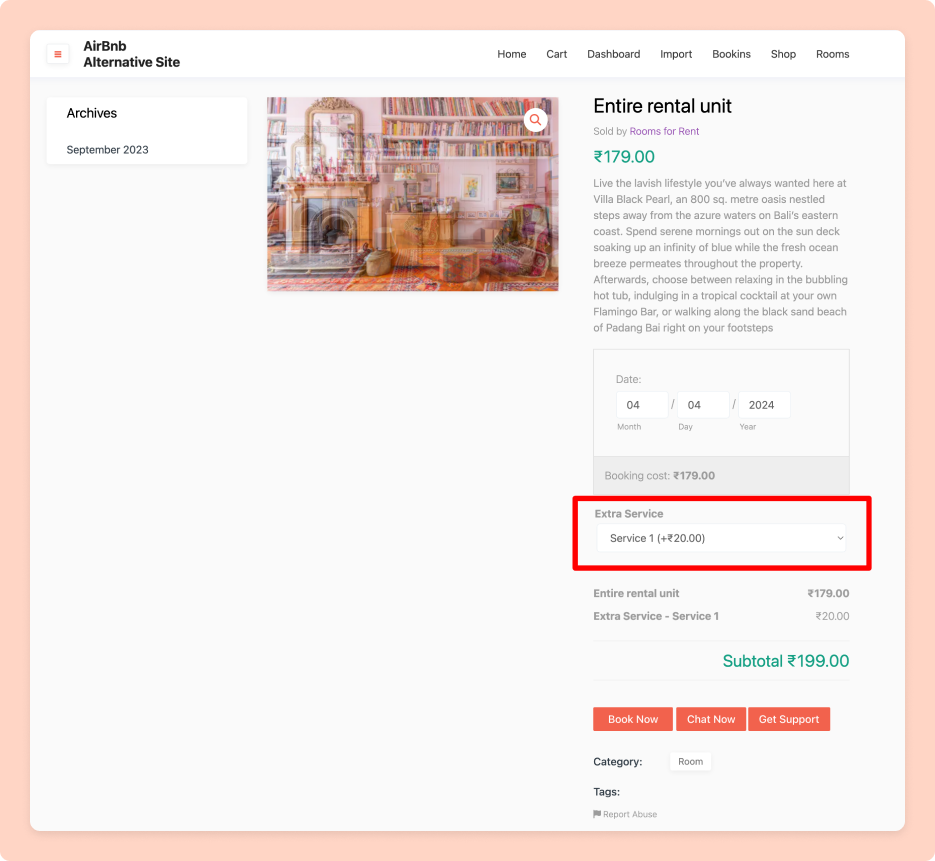
The same calculations go for the quantity-based and percentage-based addons.
How Could Vendors Utilize Dokan Product Addon
Earlier we have mentioned that vendors can also create add-ons. Let us have a look at that.
For a vendor to create an addon, you have to go to the vendor dashboard and click on Settings.
On the next page, there will be a bar named Addons. Click on it. On top of the screen, you will see a button Create New Addon. Hit that button.
You will have the same options as the admin to create your addon.
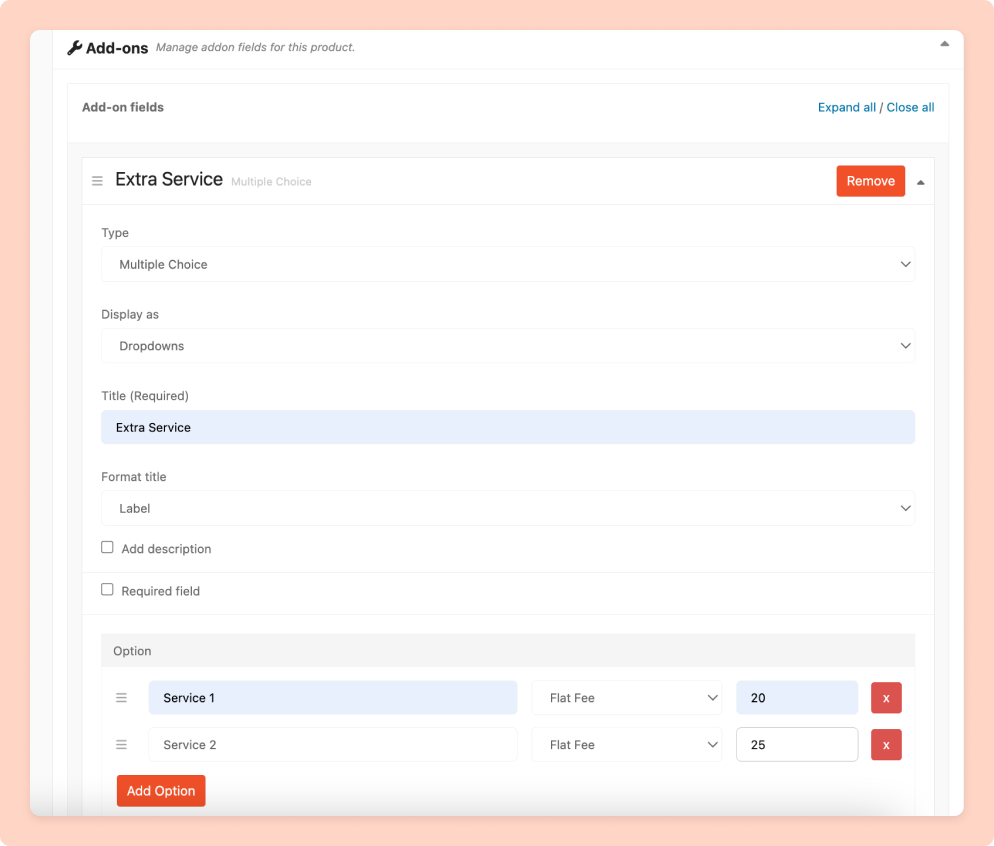
Just click on Publish like the admin to finish creating your addon.
You can create individual add-ons for individual products. To do that, select a product. If you scroll down you will see a button called Add Field. Click on it to unlock the options for addon creation.
Still, confused? ok, check out this documentation to get a clear idea.
Some Important Points to Remember About Product Addon
While setting up the Dokan product addon module, here are some points you need to remember-

- If you select the Exclude add-ons option then only the addon that was created for that product will be applicable, the global addon will not be applicable
- Otherwise, the global addon will apply to that product
- If you create an addon for the individual product but do not select the Exclude add-ons option then the Global and Individual add-ons will be applicable
- The admin will be able to view all the add-ons created by the vendor and him/herself. But the vendors can only view his/her add-ons
- Addons will apply to the products of the creator of the addon.
Check out this video on Product Addon to get to know more.
What is Cross-Selling? How it helps in Increasing Sales for A Marketplace
Cross-selling is a sales technique where a seller encourages a customer to buy additional products or services related to the one they’re already purchasing.
Here’s how cross-selling helps in increasing sales for a marketplace:
- Increases Average Order Value (AOV): By suggesting additional products or services, cross-selling encourages customers to spend more money in a single transaction, thus increasing the average order value. For example, if a customer is purchasing a camera, suggesting accessories like lenses, tripods, or memory cards can significantly increase overall sales.
- Enhances Customer Experience: Providing relevant suggestions can enhance the shopping experience for customers by helping them discover products they might not have considered otherwise.
- Drives Repeat Purchases: Cross-selling can also lead to repeat purchases as customers are introduced to complementary products that enhance the value of their initial purchase.
- Maximizes Revenue Potential: By leveraging cross-selling techniques, marketplaces can maximize their revenue potential from each customer transaction.
- Promotes Inventory Turnover: Cross-selling can help move inventory more efficiently by promoting the sale of related items.
- Facilitates Upselling Opportunities: Cross-selling can also pave the way for upselling opportunities, where customers are encouraged to purchase higher-value versions or premium options of products they are interested in.
With the help of the Dokan Product Addon module, you can use the cross-selling technique to increase the sales of your marketplace and grow subsequently.

Wrapping up on Dokan Product Addon
About 50.000+ marketplaces around the world are run by Dokan multivendor. With its advanced features, Dokan is gaining more strength day by day.
With the Product Addon module, earning with Dokan have become more easier
We hope you can boost your marketplace and earn a sizeable profit to your liking by deploying the Dokan Product Addon Module.
Subscribe to
Dokan blog
